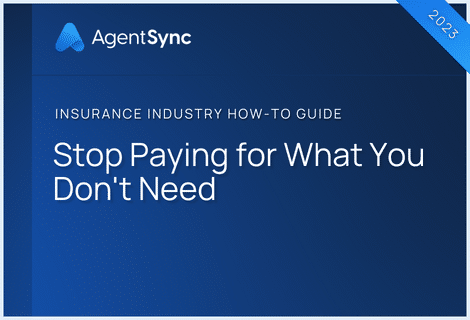

If you work in insurance, you know the industry has its own language. Baffling to outsiders, this “alphabet soup” can even throw the most experienced insurance professionals for a loop at times.
While there’s a ton of terminology of all types, this piece will focus on the acronyms commonly used in the world of annuities.
So, if you’ve ever struggled to tell your CIPR from your NIPR, or your BIPA from your BUCA, this list of helpful, common annutity acronyms is for you.
What is an AIR?
Assumed interest rate, or AIR, refers to the minimum interest rate an annuitant’s investments account must earn in order to cover both the insurance company’s costs and estimated profit. The higher the AIR, the higher income a policyholder will receive and the higher profit margins an insurer will realize. AIR is determined by the insurance company and helps determine the value of the contract.
What is an AP?
An annuity payment, or AP, is the amount an insurer pays an individual in exchange for their premiums. An annuitant can opt to start receiving payments either immediately or in the future depending on how soon they need the income. Fixed annuities guarantee payments of a specified amount while variable annuity payouts fluctuate based on the mutual funds they are tied to.
What is a CGA?
A charitable gift annuity, or CGA, is an annuity contract structured with the insurer, an individual, and a nonprofit organization. The individual receives regular annuity payments for the remainder of their life, and, upon the annuitant’s death, the nonprofit retains any remaining assets.
What is a DIA?
A deferred-income annuity, or DIA, is a type of annuity in which the insurance company promises to pay the contract holder either a lump sum or monthly installments at a future date, unlike immediate annuities which begin payments…you guessed it, immediately. DIAs have multiple methods to potentially grow the annuity value like fixed, fixed indexed, registered index-linked, and variable.
What is an FA?
A fixed annuity, or FA, is a deferred annuity contract that pays out a set and guaranteed amount at the end of the deferral period. FAs are often the first choice for risk-averse consumers, as they’re not tied to the performance of a stock market index. Individuals who purchase FAs can calculate their exact minimum annuity payments.
What is an FIA?
A fixed index annuity, or FIA, is a type of annuity contract between an individual and an insurance company in which the individual pays the insurer in return for regular payments over a specific period of time. Unlike FAs, FIAs are indexed, which means they offer higher potential gains because the insurance carrier credits additional value to the contract based on the performance of a specific market index. While the contract isn’t invested in the market, when a market index goes up, the carrier will credit the FIA contract with a portion of that growth. When the market goes down, the FIA will maintain its value.
What is an EIA?
An equity indexed annuity, or EIA, is actually the same as an FIA. Originally called EIAs, FIAs underwent a name change when confusion broke out over whether EIA contract owners were actually investing their money in stocks (also known as equities). To be clear, FIAs/EIAs are not market investments; they are insurance contracts. These days, many investment professionals simply refer to these types of contracts as indexed annuities.
What is FINRA?
The Financial Industry Regulatory Authority, or FINRA, is a nonprofit regulatory body overseen by the SEC. FINRA works to ensure the integrity of the U.S. financial system by writing and enforcing rules governing the activities and compliance of registered brokers and broker-dealers. Because registered index-linked annuities and variable annuity products are securities, any producer who wishes to sell VAs and RILAs needs to register with FINRA in addition to maintaining an insurance license in their state.
What is FVA?
The future value of an annuity, or FVA, is the amount an annuitant’s payments will be worth by the time they are received. To calculate FVA, you need to know the amount of each payment, the AIR, the quantity of payments, and the length of time over which the payments will be made.
What is a GLWB?
A guaranteed lifetime withdrawal benefit, or GLWB, is an annuity contract rider that offers individuals protection against market losses by providing a guaranteed payout as a percentage of their original investment for the rest of their lives despite market performance. GLWBs are an optional addition to variable annuities and typically require an annuitant to pay extra fees and charges.
What is a GMIB?
A guaranteed minimum income benefit, or GMIB, similar to a GLWB, is available in addition to an annuity contract to help offset the risk that comes with investing in a variable annuity. GMIBs guarantee an annuitant a minimum value of payments, but only once the annuity is annuitized.
What is a MYGA?
A multi-year guarantee annuity is a type of fixed annuity with a guaranteed interest rate above the floor for several years. The main difference between a MYGA and a regular fixed annuity is the length of time the interest rate is guaranteed. For a typical fixed annuity, the guarantee might only last for a year at a time, but with a MYGA, it lasts up to a decade, with an option to renew the contract at a new rate at the end of that term. (To be clear, all fixed annuities, including MYGAs, have a “floor” rate that is locked in.)
What is PVA?
The present value of an annuity, or PVA, describes the current value of all future payments of an annuity based on a specified rate. Because a sum of money is worth more now than the same sum at a future date, individuals can calculate the PVA to determine whether it is in their best interest to receive payment as a lump sum or spread out over a specific number of years.
What is a QLAC?
A qualified longevity annuity contract, or QLAC, is a type of deferred annuity contract that is available for purchase through an insurance or financial service company. An individual can purchase a QLAC using funds from a retirement account such as a 401(k) or IRA without the purchase counting as a taxable withdrawal.
What is the SEC?
The Securities and Exchange Commission, or SEC, is the U.S. federal government authority that regulates the securities market. The SEC, formed by Congress in 1934, protects investors from fraudulent practices by overseeing all primary players in the securities market including securities exchanges, brokers, dealers, and investment advisors. It is responsible for enforcing rules for variable annuities and RILAs.
What is the SIE?
The Securities Industry Essentials exam, or SIE exam, is a test to assess an individual’s knowledge of the basics of the securities industry. The exam covers a wide range of topics including industry-specific terminology, protocols, and structure, along with regulatory agencies, their main functions, and common prohibited practices.
What is a SPA?
A single-premium annuity, or SPA, is any annuity funded by a single payment. SPAs are typically paid for with a lump sum from either a retirement savings account like a 401(k) or IRA, or from a settlement. There are two main types of SPAs: single-premium immediate annuities and single-premium deferred annuities.
What is a RILA?
A registered index-linked annuity is an annuity contract that is tied to market performance. RILAs allow an individual to set the maximum loss they are willing to incur to limit exposure to risk while providing more growth potential. RILAs are investments, and so take on the risk of losing money based on market performance, but the insurance carrier limits losses, unlike a VA.
What is a VA?
A variable annuity, or VA, is an annuity that offers buyers a high risk, high reward investment opportunity. With VAs, the contract value is invested in the market, typically in mutual funds. The value of a variable annuity (and its future payments) fluctuates with the performance of these mutual funds, making these types of annuities riskier.
If you found these annuities acronyms helpful, check out our guide to commercial lines, personal lines, and health/life/benefits acronyms as well.
These acronyms are, of course, only one area of pedantry in the insurance industry that can make it seem daunting to newcomers. If you want to shorten that learning cycle for your compliance or operations teams, see what AgentSync can do for you.

